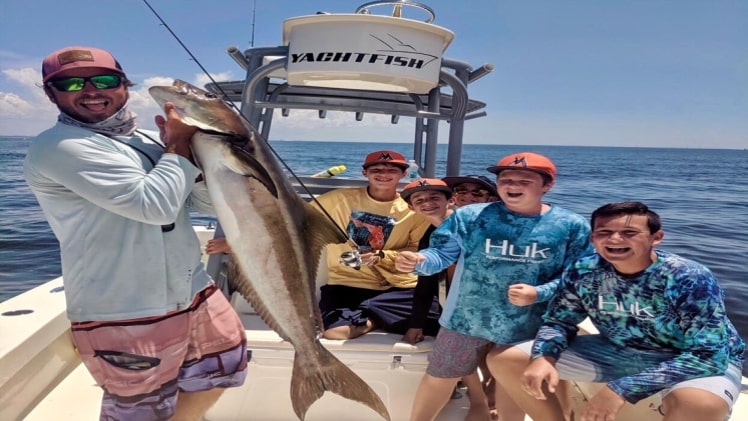To be successful in deep sea fishing, you need to have a little extra skill. Knot-tying is one of these skills. There are also situations that require different knot types for fishing. This blog will show you seven of the most popular offshore fishing knots, and how to tie them.
1. Palomar Knot
It is an easy knot to tie and is very simple. Many knots fall because the overlapped material eventually breaks down or is cut through.
When you need to tie a fishing line, whether monofilament or braided, to a ring, the Palomar Knot can be used.
Tie the Palomar Tie:
- Make a loop at one end by taking about a foot of line.
- Pass the loop through the rings so that approximately 3 inches of the line is through the loop.
- Make an overhand knot using the loop end of your line. The loop should be pushed through the middle of the circle so that it faces up. It will then fit over the ring.
- Pass the ring through the loop, and then tighten the knot gently.
This knot is essential if you’re new to fishing. This knot will allow you to connect your fishing line with the leader using a ring, or swivel. These simple steps will allow you to quickly set up your fishing line and be ready to fish. It is extremely durable and will withstand great stress.
2. Double Uni Knot
You may need to connect two types of fishing line in many situations. One example is joining a braided fishing line to a backing rod for fly-fishing. Fly-fishing in Florida is a great way to fish the surface of deep water and shallows to sight fish and hit the lakes.
Ron Martin is a world-renowned bass fisherman who relies on the strength of the double uni. The Double Uni Knot is guaranteed to hold its shape for 90% of the time.
How to tie the Double Uni knot
These instructions will help you to tie two lines together.
- Place and overlap one foot for each type of line so that each end faces in the opposite direction.
- To form a rough loop, fold the end of each line to the right and then fold it to the middle of both lines. Wrap that end around the lines and pass it through the rough loop 4 times.
- Continue pulling gently until the knot is tightened. You can tighten the knot gently.
- Continue the steps above with the end line to the right. End up with two knots that can slide together. Pin each type of line to it.
Tip If the lines are different in thickness, increase the wraps to eight for the thicker line. Wrap the thicker line eight-times around the overlapping lines, and through the rough loop. You can secure the thinner line by adding more wraps.
3. Albright Knot
The Albright Knot can be used to attach two lines with different diameters. One example is to attach a leader line and a braided cable. Tension is the main principle behind this knot. Tension is the force of pulling on one or more lines. The knot will experience more tension and hold the lines together tighter.
The knot is longer than it is tall and is great for when the knot has to pass through the guides or eyes on a fishing rod.
Tie the Albright Knot
- Place the lines so that they are parallel to each other at the juncture.
- Fold the thicker line back onto itself and make a loop around the shorter line.
- Begin by taking the thinnest line. Near the end, take the thicker line. Wrap the thinner line around the two lines. Begin at the far end, and work your way back towards the loop. Wrap about eight times.
- Pass the thinnest line’s end through the loop of thicker line.
- You can secure the knot by pulling gently on each end until the loop of thicker line is closed.
- You can tie the knot by pulling on both ends.
Although the Albright Knot may sound complicated, it is very easy to learn and highly effective. The Albright Knot was created by Jimmy Albright, an angler who specializes in Tarpon fishing. It has been on fishing rods since 1950s. Good medicine is anything that lasts that long.
The article was written by a professional charter captain at Salty Knots Fishing Charters with 15+ years of experience in the Gulf of Mexico. Salty Knots Fishing Charters is a local fishing charter service based out of St. Pete Beach, Florida. “We know what it takes to catch a giant trophy fish!” Salty Knots Is the best when it comes to Deep Sea Fishing St Pete Beach Florida.

